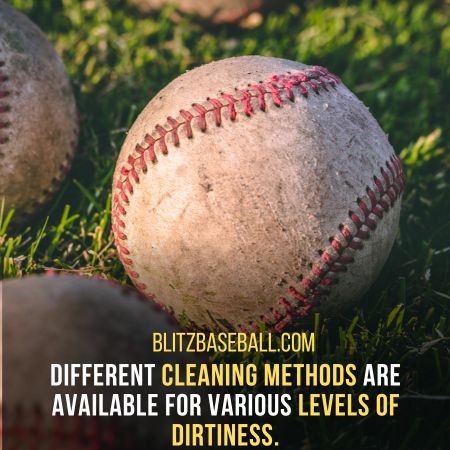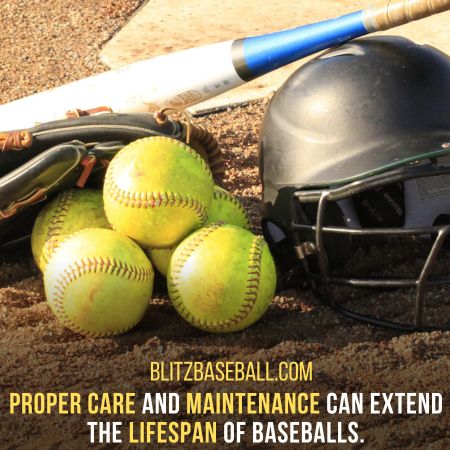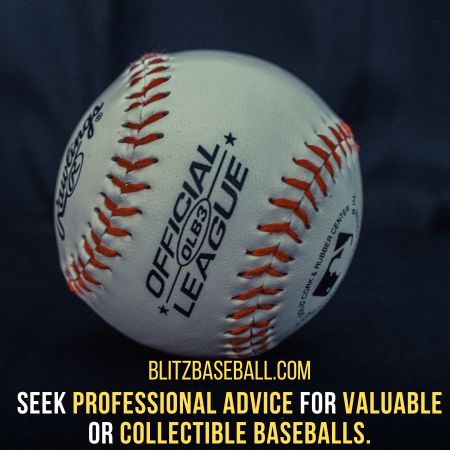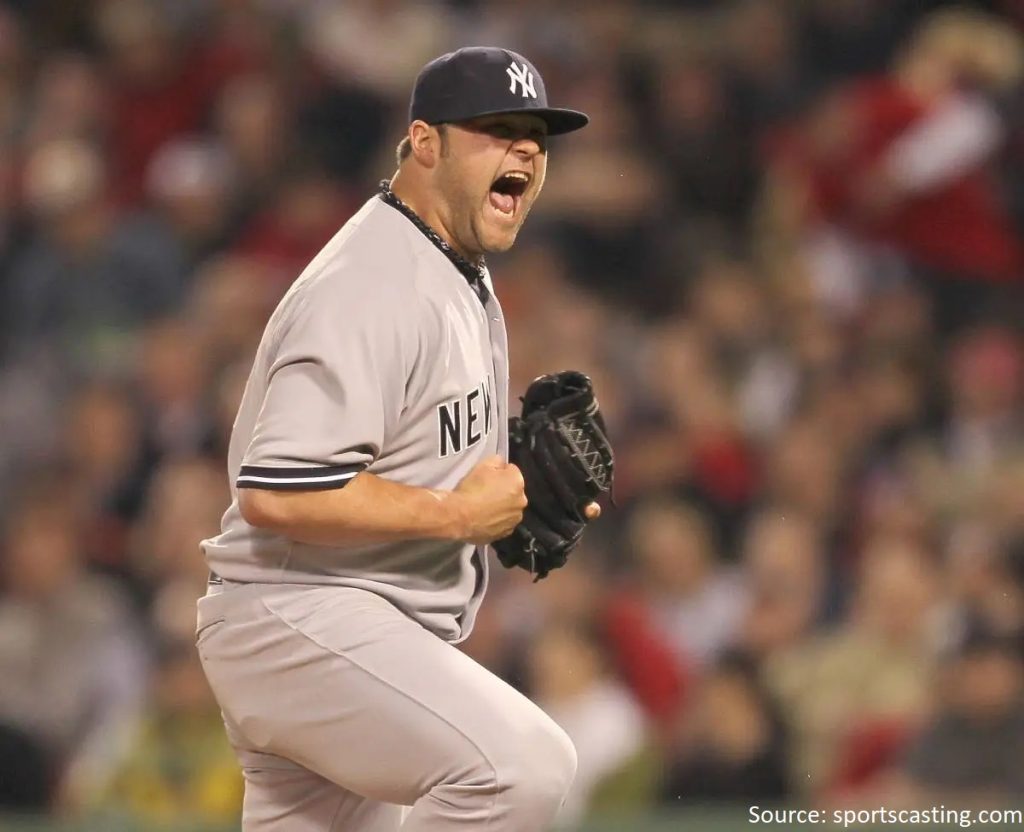Baseballs can undergo discoloration due to a variety of factors, such as the presence of enzymes, oils from hands, tobacco juice, tears, and broken seams. Maintaining the cleanliness of baseballs is crucial in order to preserve their optimal condition.
Explore how to clean baseballs with various techniques exist, including:
- Erasing with an eraser
- Utilizing a magic eraser
- Employing dishwashing liquid and warm water
- Diluting bleach with water
- Using stain removal laundry detergent with warm water
When cleaning a baseball with a signature, it is important to consider the desired level of cleanliness while avoiding any potential damage to the signature. Additionally, signed baseballs should be stored in protective cases or displays, shielded from direct sunlight and extreme temperatures, handled with clean hands or gloves, and the signature should be avoided whenever possible.
For vintage balls, gentle cleaning methods are recommended to restore their shine, and professional assistance can be sought if necessary.
It is noteworthy that Major League Baseball does not reuse baseballs, in order to prioritize fairness and consistency. Regular cleaning and proper care can prolong the lifespan of baseballs.
Key Takeaways
- Different cleaning methods are available for various levels of dirtiness.
- Seek professional advice for valuable or collectible baseballs.
- Regular cleaning can help maintain baseballs in top shape.
- Proper care and maintenance can extend the lifespan of baseballs.
Why Baseballs Turn Yellow
Baseballs can turn yellow due to various factors. Enzymes present in baseballs can change their color over time, especially in the case of baseballs with the ‘Haiti’ stamp below the Rawlings logo.
Oils from hands can also contribute to yellowing, as can substances like tobacco juice used by players during a game.
Additionally, damage from small tears and broken seams can cause discoloration.
It is worth noting that hitting dirty baseballs can transfer dirt onto baseball bats, further contributing to the yellowing process.
To prevent yellowing, it is recommended to handle baseballs with clean hands, avoid using substances that can stain them, and regularly clean and maintain both the baseballs and the equipment used during gameplay.
How To Clean Baseballs? Top Methods
Different methods are available for maintaining the cleanliness of baseballs. Here are three effective ways to clean baseballs:
-
Baseball Cleaning Machine: A specialized machine designed for cleaning baseballs is a convenient option, especially when dealing with multiple dirty or muddy baseballs. By following the machine’s instructions and using a baseball cleaner, you can efficiently clean the baseballs, saving time and effort. After running the machine for the specified time based on the dirtiness, check the cleanliness and repeat if necessary before allowing the baseballs to dry before storage.
-
Removing Stickers or Gum: To remove stickers or gum from baseballs, you can use a wet cloth or scrap paper. Simply wet the cloth or paper, press it on the gum or sticker, and remove after a few minutes. Alternatively, a vacuum cleaner can also be helpful in removing stuck gum or stickers. If the gum or sticker is stubborn, you can use a liquid soap to soften it and then remove it with a cloth or paper towel. For tougher adhesives, a scrubber can be effective, but be careful not to rub too hard and damage the ball’s surface.

Caring for Signed Baseballs
When caring for baseballs that have been signed, it is important to consider weather conditions for storage in order to prevent damage to the signatures. Proper storage methods play a crucial role in preserving autographs and ensuring their longevity. Here are some key tips for caring for signed baseballs:
| Storage Tip | Description |
|---|---|
| Use a Case | Protect signed baseballs by storing them in a case specifically designed for baseballs. This helps shield them from light exposure and prevents accidental damage. |
| Avoid Extreme Conditions | Keep signed baseballs away from high temperatures and humidity, as these conditions can cause the signatures to fade or run. Choose a cool, dark place for storage to slow down any potential fading. |
| No Bleach or Magic Eraser | When cleaning signed baseballs, avoid using bleach or magic erasers near the signature. These cleaning agents can potentially damage or fade the autograph. |
| Handle with Care | Always handle signed baseballs with clean hands or gloves to prevent dirt or oils from transferring onto the signature. Avoid touching the autograph whenever possible to preserve its integrity. |
By following these guidelines, you can ensure that your signed baseballs remain in top shape and retain their value as cherished collectibles.
Restoring Shine on Vintage Balls
To restore the shine on vintage baseballs, it is important to use methods that are suitable for white leather and avoid harsh cleaning agents that may potentially damage the ball.
When dealing with scuff marks on vintage balls, gentle cleaning techniques should be employed to prevent further deterioration. One method is to create a solution by mixing warm water, dish soap, and a small amount of bleach. The baseball should be rinsed in this solution and the surface should be gently brushed to remove dirt and stains.
After cleaning, it is essential to dry the ball thoroughly to prevent any moisture from causing damage.
In addition to cleaning, proper storage techniques are crucial for preserving vintage baseballs. They should be kept in a cool and dark place to slow down fading and protect the ball from exposure to light. Using a case or display to shield the ball from further damage is also recommended.
Reasons for Not Reusing Baseballs
Reusing baseballs in Major League Baseball is not common practice due to concerns about fair play, consistency, and the potential for altered characteristics of used baseballs. The decision to not reuse baseballs is rooted in the desire for a level playing field and maintaining consistent gameplay. Here are some key reasons why baseballs are not reused in MLB:
- Dust and scratches during play make it difficult to clean baseballs effectively.
- Balls can come apart and lose their shape after extended use, affecting their performance.
- Standardizing baseballs ensures fair competition for all players.
- Used baseballs are carefully checked for authenticity before being sold as collectibles.
Moreover, while bleach is commonly used to clean vintage baseballs, there are alternative methods available. These alternatives include using a mixture of warm water, dish soap, and a small amount of bleach, or seeking professional assistance to ensure the preservation of the ball’s integrity.
It is important to consider the cost-effectiveness of using a baseball cleaning machine compared to other cleaning methods, as well as the potential risks associated with using bleach on vintage balls.

Sanitizing Baseballs
Sanitizing baseballs is an important consideration for maintaining cleanliness and hygiene in the game. Proper cleaning equipment and techniques are essential to ensure that the baseballs are free from dirt, germs, and other contaminants. Additionally, proper storage of baseballs is crucial to preserve their quality and extend their lifespan.
To effectively sanitize baseballs, it is recommended to use dish soap and water. Gently scrub the baseballs with a soft cloth or brush, making sure to remove any visible dirt or stains. Rinse the baseballs thoroughly to ensure that all soap residue is removed. Allow the baseballs to dry completely before storing them to prevent the growth of mold or mildew.
Proper storage of baseballs is equally important in maintaining their cleanliness and longevity. It is recommended to store baseballs in a cool, dry place away from direct sunlight and extreme temperatures. Using a protective case or display can also help prevent damage and contamination.
Incorporating a table into this section can provide additional information on the recommended cleaning equipment and proper storage techniques for baseballs:
| Cleaning Equipment | Proper Storage |
|---|---|
| Soft cloth or brush | Cool and dry place |
| Dish soap | Protective case or display |
| Water | Away from direct sunlight and extreme temperatures |
By following these cleaning and storage guidelines, baseballs can be kept in top shape, ensuring a clean and safe playing experience.
Playing with Wet Baseballs
Playing with wet baseballs can pose potential dangers and should be avoided to ensure the safety of players. Moisture on the surface of a baseball can affect its grip and trajectory, leading to unpredictable throws or swings. Additionally, wet baseballs can become heavier and harder, increasing the risk of injury upon impact.
To prevent moisture damage and maintain the integrity of the game, players should take steps to dry wet baseballs before use. Here are some effective drying techniques:
- Pat dry the baseball with a clean towel to remove excess moisture.
- Place the baseball in a well-ventilated area to allow natural air drying.
- Use a fan or a hairdryer on a low, cool setting to expedite the drying process.
- Avoid exposing the baseball to direct heat sources, as this can damage the leather and alter its properties.
By following these drying techniques, players can ensure that baseballs are in optimal condition for safe and consistent gameplay.

Frequently Asked Questions
Can you use household cleaning products on baseballs?
Household cleaning products should be used with caution on baseballs. While some mild solutions like dishwashing liquid and warm water may be effective, harsh chemicals can damage the ball’s material. It is recommended to use specialized baseball cleaning solutions or seek professional advice for alternative methods.
How do you remove scuff marks from baseballs?
Scuff marks on baseballs can be removed by using a gentle cleaning method. Avoid using harsh cleaning agents that may damage the ball. Consider using a stain removal laundry detergent and warm water to restore the shine on baseballs.
What is the best way to prevent baseballs from getting dirty?
To prevent dirt buildup on baseballs, it is recommended to clean them regularly at home. This can be done using methods such as using an eraser or a magic eraser, dishwashing liquid and warm water, or stain removal laundry detergent and warm water.
How often should you clean a baseball?
It is recommended to clean a baseball as needed, depending on the level of dirtiness. When cleaning, it is important to use safe cleaning products such as mild dishwashing liquid and warm water. Additionally, it is advisable to avoid using harsh chemicals that may damage the baseball.
Is it possible to clean a baseball without ruining it?
Yes, it is possible to clean a baseball without ruining it. There are various cleaning solutions and alternative methods available that can effectively remove dirt and stains from a baseball while preserving its integrity.
Conclusion
In conclusion, proper cleaning and care are essential to maintain baseballs in top shape. Understanding the reasons behind baseballs turning yellow and using suitable cleaning methods can help restore their original appearance. Some effective cleaning methods include using erasers, dishwashing liquid, or stain removal laundry detergent.
When dealing with signed baseballs, it is important to consider the desired level of cleanliness and handle them with care to avoid damaging the signature. Vintage balls should be gently cleaned to restore their shine, and seeking professional assistance may be necessary for the best results.
Lastly, it is worth noting that Major League Baseball prioritizes fair play and consistency by not reusing baseballs. This ensures that each game is played with new, fresh baseballs.
